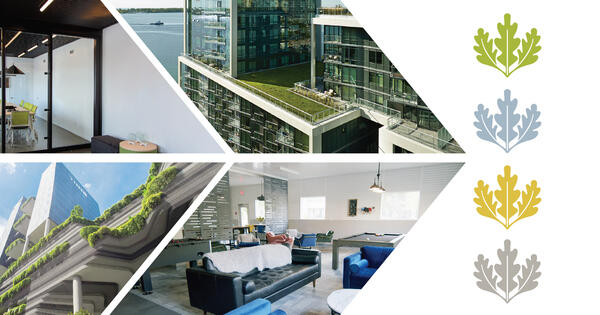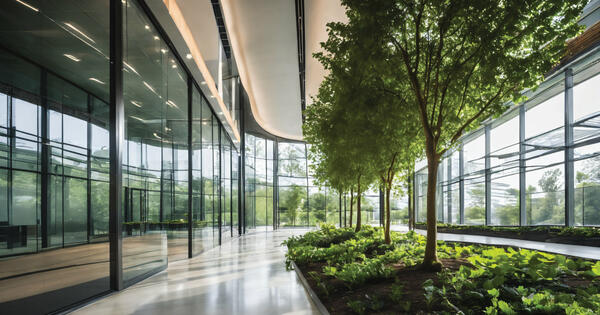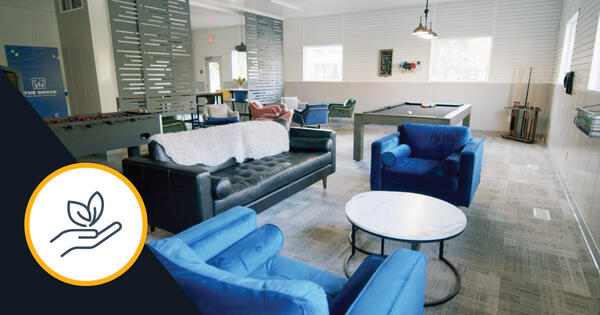Polyvinyl chloride, better known as PVC, is one of the most versatile and widely used plastics in the world. This synthetic polymer boasts flexibility, durability, and cost-effectiveness, making it a popular choice across a broad range of applications. You’ll find PVC in everything from pipes, cables, and flooring to medical devices and clothing. Notably, it’s also the material behind Trusscore Wall&CeilingBoard — a durable, easy-to-install, and attractive solution for interior walls and ceilings.
Despite its widespread use and numerous benefits, several misconceptions about PVC continue to circulate. These myths can create confusion and lead to misunderstandings about the material’s safety, environmental impact, and suitability for various applications. In this blog post, we’ll set the record straight by debunking seven of the most common myths about PVC.
Myth #1: PVC Is Bad for the Environment
A persistent myth about PVC is that it's inherently harmful to the environment. This belief stems from concerns over its production process, the use of additives, and its end-of-life disposal. Critics often cite that PVC is derived from non-renewable resources like petroleum and natural gas, and they worry about the release of harmful chemicals during manufacturing and incineration, contributing to pollution and posing risks to both the environment and human health.
However, the notion that PVC is categorically harmful to the environment is misleading. While PVC production and disposal require careful management, advancements in technology have significantly reduced its environmental footprint.
At Trusscore, we’re committed to minimizing the environmental impact of our PVC-based products throughout their entire life cycle:
- During manufacturing, we operate a zero-waste facility, minimizing raw material use by incorporating recycled materials wherever possible and regrinding excess material created during production.
- On the market, we offer custom product sizes to reduce material waste during installation. Pre-finished Trusscore Wall&CeilingBoard panels are so durable that they're designed to outlive the buildings they're installed in, reducing the need for replacements and conserving resources in the long run.
- After purchase, we offer a full-circle recycling program, allowing off-cuts and excess material to be recycled up to six or seven times to create new PVC-based building materials.
Myth #2: PVC Off-Gasses Volatile Organic Compounds
Another common belief is that PVC constantly off-gasses volatile organic compounds (VOCs) because of its plastic composition. The concern is that, like other plastics, PVC might emit harmful chemicals into the air over time, contributing to indoor air pollution and posing health risks. This belief is often fueled by reports of older or low-quality plastic products that have been known to off-gas, leading to a general mistrust of all plastic-based materials, including PVC.
However, this belief doesn’t hold up when it comes to modern, high-quality PVC products. The truth is, PVC used in building materials today is often engineered to be low-VOC or even VOC-free. Trusscore Wall&CeilingBoard itself is low-VOC compliant and meets the California Department of Public Health 01350 standard for low-emitting materials. Plus, during construction, pre-finished Trusscore panels install with screws and don’t require sanding or painting, keeping the air free from additional contaminants and VOCs like drywall dust, glue, and paint.
Myth #3: PVC Is Unsafe for Indoor Use
Building on the misconception that PVC off-gasses VOCs is the broader myth that PVC is unsafe for indoor use altogether.
In reality, PVC products — especially those designed for indoor use, like Trusscore Wall&CeilingBoard — are among the safest materials available for your home. One of the key benefits of Trusscore Wall&CeilingBoard is its moisture-resistant properties, which make it an excellent choice for areas prone to dampness, such as bathrooms, basements, and laundry rooms. Unlike traditional materials like drywall, which can absorb moisture and become a breeding ground for mold and mildew, PVC resists water and doesn’t harbor these harmful organisms. This not only helps prevent the growth of mold and mildew but also protects your walls from the damage that moisture can cause over time.
By preventing mold and mildew, Trusscore Wall&CeilingBoard contributes to a healthier indoor environment, reducing the risk of respiratory issues and other health problems associated with poor indoor air quality.



Myth #4: PVC Produces Toxic Smoke in a Fire
Another widespread myth is that PVC produces toxic smoke in a fire. While it’s true that PVC materials do release some toxic substances in fires, they’re no more hazardous than what’s produced by many other common building materials.
For example, the main irritant gases released from PVC during a fire are acrolein (which also comes from natural and synthetic sources like wood) and hydrogen chloride (HCl). Hydrogen chloride acts as an irritant rather than a lethal hazard.
Trusscore Wall&CeilingBoard also has a Class A fire rating, which is the highest fire safety rating per ASTM E84 and CAN/ULC-S102 standards. This means they produce minimal smoke, which is important as smoke can hinder visibility and escape during a fire.
Myth #5: PVC Products Look Cheap
The idea that PVC products look cheap is rooted in past experiences with lower-quality PVC products. People might also associate PVC with budget-friendly or mass-produced items, reinforcing the perception that it lacks the visual appeal of more expensive materials.
However, this notion doesn’t reflect the reality of modern PVC products like Trusscore Wall&CeilingBoard. Whether you’re looking for a sleek, modern appearance or something that complements a more rustic design, Trusscore fits the bill. White Trusscore Wall&CeilingBoard in particular is a popular option because it’s bright, clean, and acts as the perfect backdrop for wood and metal accents. Plus, PVC’s ability to resist fading, staining, and wear means that it maintains its appearance over time.

Myth #6: All PVC Products Contain Harmful Additives
Whether or not a PVC product has additives depends on the type of PVC you’re talking about since there are two separate types: rigid and flexible PVC.
Rigid PVC is used to make various construction products like plumbing pipes, electrical conduits, window frames, doors, and wall and ceiling panels like Trusscore Wall&CeilingBoard. Rigid PVC does not contain additives like plasticizers and is a safe choice for applications where panels come into direct contact with food and water.
Flexible PVC, on the other hand, does have additives like phthalates. Phthalates are a group of chemicals commonly used as plasticizers to increase the flexibility and durability of PVC products like cable insulation and flooring. They’re considered harmful because they can leach out of products over time, potentially leading to health issues when humans are exposed to them.
Myth #7: PVC Degrades Quickly Under UV Light
Prolonged exposure to sunlight can cause some plastics to become brittle, discolored, or weakened over time. Since PVC is a type of plastic, people often assume it’s particularly vulnerable to UV damage.
However, the UV resistance of PVC depends on the type of PVC, the chemical makeup of a PVC product, and whether it’s intended for indoor or outdoor use. Trusscore Wall&CeilingBoard contains an additive that prevents UV damage, ensuring the panels never yellow or fade. Despite the additive, we only recommend using Trusscore in interior and sheltered exterior applications.
PVC is a material that’s often misunderstood, with many myths surrounding its safety, environmental impact, and overall quality. However, modern advancements in PVC technology and manufacturing processes have addressed many of these concerns. Trusscore Wall&CeilingBoard exemplifies the best of what PVC has to offer — it's safe, durable, environmentally conscious, and aesthetically pleasing.






